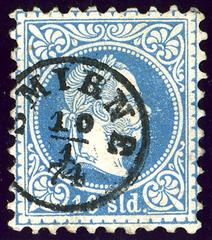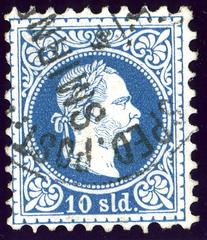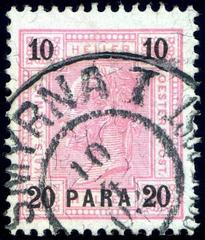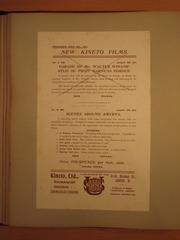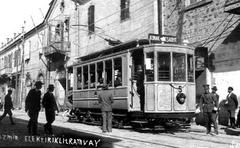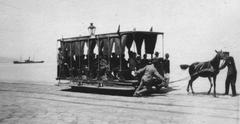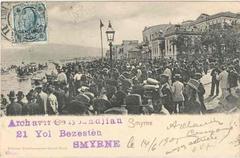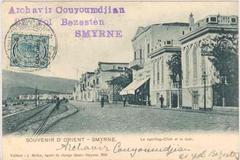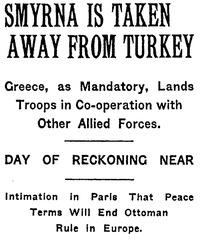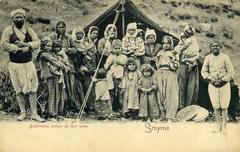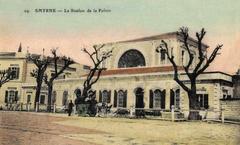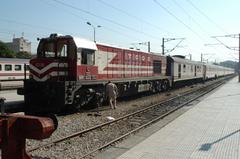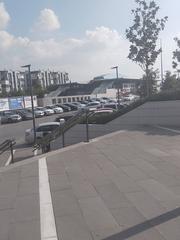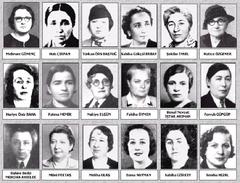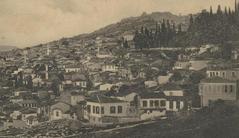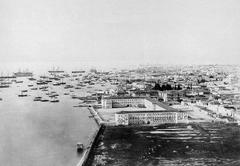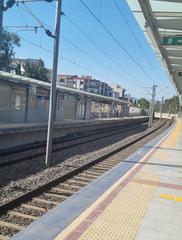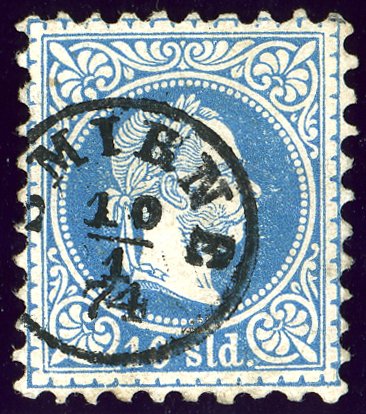
Smyrna (İzmir), Turkey: Historical Sites Tickets and Visiting Hours Guide
Date: 14/06/2025
Introduction
Nestled along Turkey’s breathtaking Aegean shoreline, Smyrna—modern-day İzmir—offers a living mosaic of ancient civilizations and contemporary vibrancy. With an uninterrupted history stretching back over 8,000 years, İzmir has been shaped by Anatolian, Greek, Roman, Byzantine, and Ottoman influences. Today, it stands as Turkey’s third-largest city and a destination where visitors can walk amid millennia-old ruins, explore bustling markets, and enjoy a cosmopolitan lifestyle.
This comprehensive guide highlights Smyrna’s historical and cultural significance, focusing on key archaeological sites, practical visitor information, accessibility, and essential travel tips. Whether you’re fascinated by ancient history, eager to sample the region’s culinary delights, or simply seeking the best panoramic views, İzmir promises an unforgettable experience.
For the latest travel details and official updates, refer to resources such as the İzmir Archaeology Museum, the Agora Open Air Museum Official Page, and the Official İzmir Tourism Website.
Table of Contents
- Introduction
- The Ancient City: Origins and Growth
- Greek, Hellenistic & Roman Eras
- Religious and Cultural Heritage
- From Byzantium to Ottoman İzmir
- Key Historical Sites: Hours & Tickets
- Getting There & Around
- Accessibility & Travel Tips
- Frequently Asked Questions (FAQ)
- Conclusion & Further Resources
The Ancient City: Origins and Growth
The earliest traces of human settlement in İzmir date back to the Neolithic era, over 8,000 years ago, according to archaeological research (İzmir Archaeology Museum). The city’s strategic location at the mouth of the Gediz (Hermus) River enabled it to flourish as a key trade hub, attracting Anatolian, Lydian, and later Greek settlers. By the 11th century BCE, “Old Smyrna” was a thriving community, setting the stage for centuries of urban development and cultural exchange.
Greek, Hellenistic & Roman Eras
Greek Colonization & Archaic Period
Smyrna’s rise as a prominent city began with Aeolian and then Ionian Greek settlers. It became a bustling center for trade, crafts, and culture by the 7th century BCE, renowned for its markets, harbor, and cosmopolitan population.
Hellenistic Revival
After periods of decline, Smyrna was reimagined in the late 4th century BCE under Alexander the Great’s successors, who established “New Smyrna” on Mount Pagos (Kadifekale), featuring an acropolis, city walls, and public monuments. The city’s grid layout and monumental buildings reflected its renewed prosperity (Smyrna Agora).
Roman Era
Under Roman rule, Smyrna reached new heights as a center of commerce and culture. Following the earthquake of 178 CE, the agora was rebuilt with imperial support, becoming the heart of civic life. The city’s theaters, stadiums, and temples showcased its status as a vibrant metropolis of the province of Asia (TravelSetu).
Religious and Cultural Heritage
Smyrna was distinguished by its religious diversity, featuring temples to Greek deities, a significant Jewish presence, and early Christian communities. Notably, Smyrna is one of the Seven Churches of Asia in the Book of Revelation. The Church of St. Polycarp, dedicated to an early Christian martyr, remains a pilgrimage site (Ephesus Travel Guide; The Other Tour). Over the centuries, religious coexistence and multiculturalism became defining features of the city (Ebruli Turizm).
From Byzantium to Ottoman İzmir
After Byzantine rule, Smyrna experienced periods of instability before becoming part of the Seljuk and, later, the Ottoman Empire in the 15th century. Ottoman İzmir was a major Mediterranean port hosting Greeks, Armenians, Jews, Levantines, and Turks, reflected in the enduring multicultural character of neighborhoods like Kemeraltı and in religious structures such as synagogues and mosques (Greek Reporter; Rahtours).
The catastrophic fire of 1922 during the Greco-Turkish War devastated much of the old city, but İzmir emerged as a dynamic, modern metropolis, open to the world yet deeply rooted in its diverse past (The Other Tour).
Key Historical Sites: Hours & Tickets
Agora Open Air Museum
- Description: One of the best-preserved Roman agoras in the world, featuring colonnades, arches, and subterranean galleries.
- Visiting Hours: April–October: 8:00 AM–7:00 PM; November–March: 8:00 AM–5:00 PM
- Tickets: Approx. 50–60 TL; discounts available for students/seniors (Agora Open Air Museum Official Page)
- Accessibility: Some uneven terrain; partial wheelchair access
- Guided Tours: Available on-site or via local operators
Kadifekale (Mount Pagos)
- Description: Hellenistic and Roman-era fortress offering sweeping views of İzmir
- Visiting Hours: Open daily, sunrise to sunset
- Tickets: Free entry
- Accessibility: Steep paths; not suitable for all mobility levels
Kemeraltı Bazaar
- Description: Historic bazaar district dating to Ottoman times; ideal for shopping, dining, and people-watching
- Opening Hours: Most shops open 9:00 AM–7:00 PM
İzmir Archaeology Museum
- Description: Showcases artifacts from Smyrna and the Aegean region
- Visiting Hours: 9:00 AM–5:00 PM; closed Mondays
- Tickets: Approx. 30–50 TL
- Accessibility: Fully accessible
Other notable sites include the Roman Theater (partially excavated), Konak Square with its iconic Clock Tower, the Tarihi Asansör (Historical Elevator), and the scenic Kordonboyu waterfront (Visit İzmir; turkeythings.com).
Getting There & Around
Arrival
- Airport: İzmir Adnan Menderes Airport (ADB), 18 km from city center, serves domestic and international flights.
- Transport: İZBAN suburban train, airport shuttles, and taxis connect the airport to major districts (eskapas.com).
Local Transportation
- Public Transport: Trams, metro, buses, and ferries; use the İzmirim Kart for seamless travel (theturkeytraveler.com).
- Taxis: Widely available; always use the meter.
Accessibility & Travel Tips
- Best Time to Visit: Spring (April–June) and autumn (September–October) for mild weather and festivals.
- Site Access: Major attractions like the Agora and museums have paved paths; ancient sites may have uneven surfaces.
- Tickets: Most sites sell tickets at the entrance; some combined or guided tour tickets can be booked online.
- Dress Code: Casual attire is suitable; modest dress required in mosques.
- Safety: İzmir is considered safe, with low violent crime. Remain vigilant in crowded areas and bazaars.
- Health: Bottled water recommended; pharmacies and medical facilities are widespread.
- Language: Turkish is official; English widely spoken in tourist areas.
- Budget: İzmir is affordable, with dining and accommodation options for every traveler.
Frequently Asked Questions (FAQ)
Q: What are the visiting hours for the Agora Open Air Museum?
A: 8:00 AM–7:00 PM (April–October); 8:00 AM–5:00 PM (November–March).
Q: Do I need to book tickets online for Smyrna sites?
A: Most tickets are sold onsite, but some guided tours and combined museum tickets are available online.
Q: Are İzmir’s historical sites accessible for wheelchair users?
A: Museums and modern attractions are generally accessible; ancient sites may have limited access.
Q: Is İzmir safe for solo travelers?
A: Yes, İzmir is one of Turkey’s safest large cities; just follow standard travel precautions.
Q: What are the best neighborhoods to stay in?
A: Konak, Alsancak, and Kordon are central, lively, and close to major sites.
Conclusion & Further Resources
İzmir, the ancient city of Smyrna, offers travelers a vivid tapestry of civilizations, from the grandeur of the Roman Agora and the heights of Kadifekale to the sensory pleasures of Kemeraltı and the city’s vibrant festivals. Careful planning—considering site opening hours, ticketing, and the best seasons to visit—ensures a fulfilling journey through this timeless city.
For ongoing updates, exclusive guides, and travel tips, download the Audiala mobile app and follow us on social media. Deepen your exploration with related articles on İzmir’s cuisine, neighborhoods, and annual festivals.
For official information and further reading, visit:
References
- İzmir Archaeology Museum, Official Website
- Agora Open Air Museum Official Page, Smyrna Agora
- Official İzmir Tourism Website
- Greek Reporter, History of Ancient Greek City Smyrna
- Rahtours, İzmir: A Vibrant Metropolis
- TravelSetu, Agora of Smyrna Tourism History
- Ephesus Travel Guide, Smyrna
- The Other Tour, Smyrna
- Ebruli Turizm, Smyrna The City of Homer
- Visit İzmir, Destination Information
- Eskapas, Visit İzmir Smyrna
- Novo-Monde, Things to Do in İzmir
- Guided Istanbul Tours, Biblical Smyrna
- Travellikeaboss, Is It Safe to Travel to İzmir?
